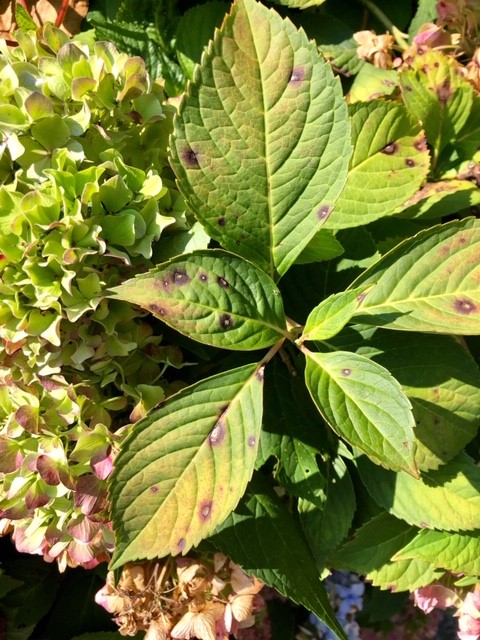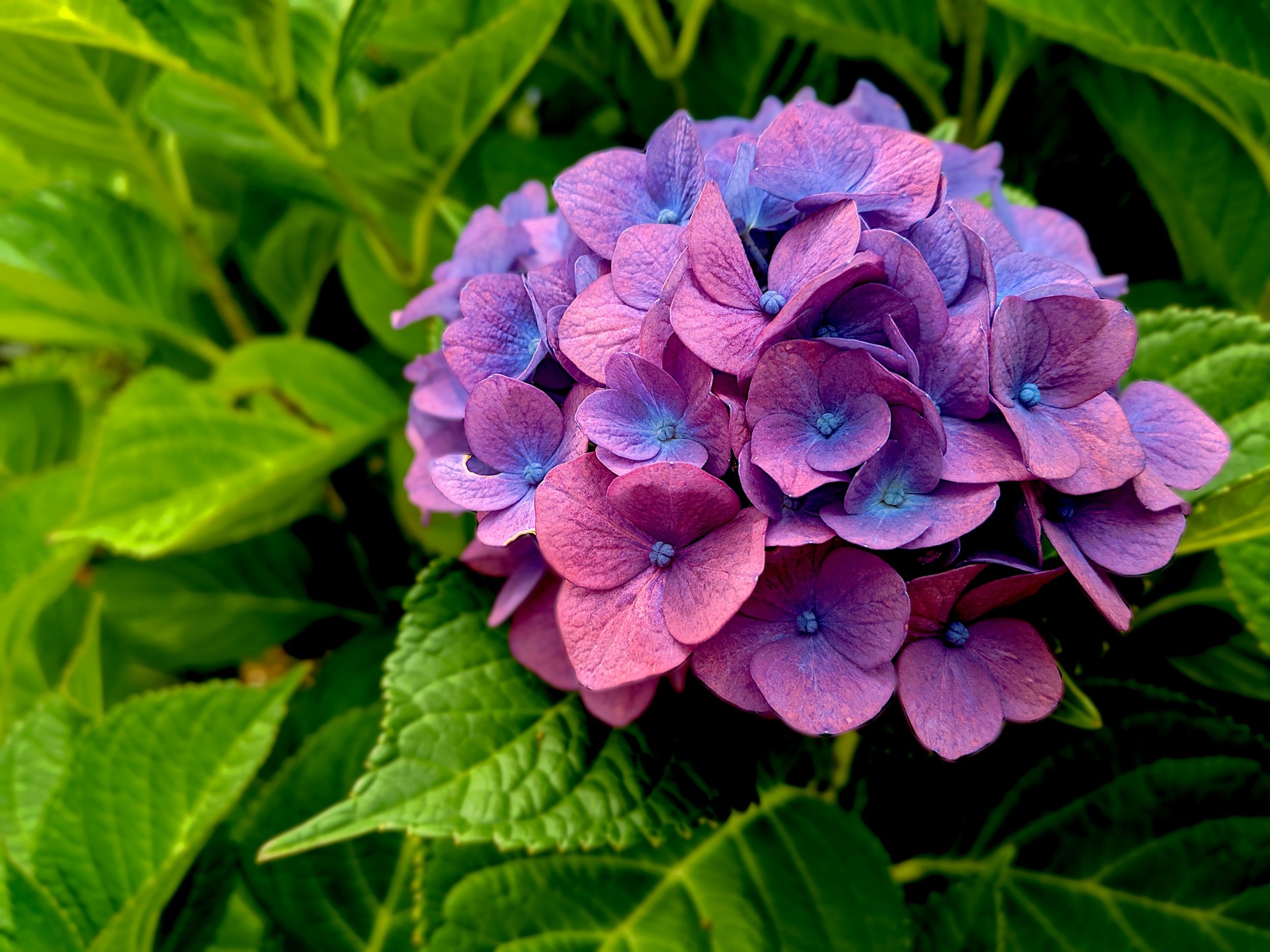Facts About Hydrangea Leaves Turning Yellow Revealed
A Biased View of Hydrangea Leaves Turning Yellow
Table of ContentsUnknown Facts About Hydrangea Leaves Turning YellowAn Unbiased View of Hydrangea Leaves Turning YellowHydrangea Leaves Turning Yellow for BeginnersHydrangea Leaves Turning Yellow Fundamentals ExplainedExamine This Report on Hydrangea Leaves Turning YellowThe smart Trick of Hydrangea Leaves Turning Yellow That Nobody is Talking AboutThe Basic Principles Of Hydrangea Leaves Turning Yellow The Facts About Hydrangea Leaves Turning Yellow Uncovered
You can attempt to stop fungal illness by keeping your yards cool and devoid of debris. Provide your yards a great fall and spring tidy up (Hydrangea Leaves Turning Yellow) and eliminate all leaf litter from the ground, as well as from within the crown of the plant. These leaves that will certainly stick around, waiting to assault in the next growing season.Copper fungicides are, yet if they are overused they can become hazardous to your plant. Clip the leaves, and remove them from the garden.
If they aren't obtaining enough water, their fallen leaves will certainly brownish. Hydrangeas have a in the midday sunlight, and bouncing back as soon as the sunlight has changed and the plants have some time to recoup. If this occurs consistently you may see brown and crispy fallen leaves that are sagging. This is their means of allowing us know that it requires some added moisture.
The 10-Minute Rule for Hydrangea Leaves Turning Yellow
!! Water them slowly so the plants can saturate up that water. Typically in areas where plants have ended up being dried out, the soil is dry and the drainage of water comes to be a trouble.
Developed plants may require to be watered one to three times per week, depending on your problems. It might appear appealing to spray the leaves down.
Water the base of the plant,. When the plant has actually recoiled, you can resume a routine watering timetable. The majority of varieties and selections choose partial sunlight. Panicle hydrangeas enjoy complete sun, however the remainder of the group really likes partial color. Partial color provides regarding four to six hours of sunshine.
The smart Trick of Hydrangea Leaves Turning Yellow That Nobody is Discussing
The container should be huge enough so the plant can grow and get all of the water and nutrients it needs. Panicles enjoy the full sun.
No matter of the selection, plan in advance and make certain your plant has lots of defense from the wind. Hydrangea Leaves Turning Yellow. You have a couple of choices below. You could hair transplant to a new place, or you can create a wind barrier utilizing an additional plant, or fencing. To produce a wind obstacle you could, or a shrub to block the wind.
Ornamental lawn, Rose of Sharon, or Holly bushes are simply a few ideas of plants you might make use of to block the wind. If you need to transplant, locate a spot in your garden that is well shielded from sun and wind. Transplanting is best done in the fall or the springtime.
Little Known Questions About Hydrangea Leaves Turning Yellow.
All of the above situations could happen to any kind of gardener. Thankfully for everyone, hydrangeas are really resistant, and will most likely recuperate very promptly with a little love and care. The plants location is one of the most vital variable when it concerns getting established and correct growth. With a little planning on growing area and proper upkeep, you'll have the ability to guarantee your hydrangeas!.
So, if Hydrangea leaves turn yellow and falls off later on, it's normally due to overwatering, as the plant can not uptake water and sheds the leaves to website link remove transpiration. Following this, Hydrangea leaves start to droop and wilt. Considering that both conditions can establish yellow fallen leaves, you need to identify the difference in between the overwatered and underwatered plant.
You can rescue the plant from yellow fallen leaves by offering it the proper light and placement. If your plant gets yellow leaves, relocate to a dark location. Place Hydrangea plants indoors near an east-facing window. Dapple the plant with curtains or UV security sheets to obstruct direct warm.
Not known Factual Statements About Hydrangea Leaves Turning Yellow
Bear in mind, Hydrangeas are just frost forgiving in loss and winter as they go dormant, and temperature level changes can create yellowing fallen leaves and brownish spots. If it gets also cozy, the sides of the fallen leaves end up being yellow, turn brownish and create a crunchy structure. Move your potted Hydrangeas away from breezy north-facing home windows in the winter season.

Hefty soil can quickly block the oxygen supply to the roots and sever the connection with the upper parts of the plant (leaves) (Hydrangea Leaves Turning Yellow). Hydrangea leaves transform their shade if they locate small inconveniences in the soil composition. This issue can trigger the Hydrangea delegates turn yellow, struggle with fallen leave decreases, and provide a sagging plant compatible overwatering
But, yellow fallen leaves in Hydrangeas are the first indications of illness infestation, commonly adhered to by black spots, browning, drops, and wilting. Separate the unhealthy or pest-infested plant from the healthy and balanced plants to avoid condition spread. If it is a garden plant, eliminate all the contaminated leaves making use of sanitized tools and cleanse up all the particles.
Hydrangea Leaves Turning Yellow - The Facts
Reducing off helps Hydrangea shade unnecessary weight and coverage, allowing the development of new fallen leaves. The most effective time to prune Hydrangeas is springtime when the plant prepares to grow foliage for the following season. Evaluate for spent or infected leaves and cut the base of a stalk that joins the fallen leaves and stem.
Prevent find more reducing healthy and balanced or eco-friendly leaves, and do not eliminate more than 25% of the plant's foliage. The main factor behind the red fallen leaves in Hydrangea is inadequate dirt or environmental conditions.

The Of Hydrangea Leaves Turning Yellow
There are six primary reasons this might occur:: The plant does not obtain adequate sunlight.: The origins are either also damp or too dry.: The plant is too cold.: The soil is not acidic or alkaline enough for the hydrangea.: The plant isn't getting the best nutrients it requires to stay healthy.
Each reason impacts the plant in a method that can be taken care of if we recognize how to care for hydrangeas the best way. When we talk concerning inadequate light for hydrangeas, we imply that the plant isn't getting enough sunshine.
Without adequate sunlight, the leaves can transform yellow, the plant can become weak, and it might generate less blooms. To guarantee a hydrangea receives adequate light, it needs to be positioned in an area where it can appreciate the early morning light and be safeguarded from the extreme mid-day sunlight. Overwatering is when a hydrangea plant gets even more water than it needs.
Unknown Facts About Hydrangea Leaves Turning Yellow
Without adequate air, the roots can not do their task well, and the plant begins to suffer. Yellow fallen leaves may be an indicator that the plant is obtaining excessive water. On the various other hand, dehydration happens when the plant does not obtain adequate water. Like people, plants require water to stay healthy.
This problem is common in the loss as the weather modifications or if a hydrangea is grown in a place where it does not get sufficient heat from the sunlight. It is necessary to understand the ideal conditions for hydrangeas to avoid low-temperature stress and anxiety. For instance, a lot of hydrangeas grow ideal in these details areas 6 to 9, where the climate is milder.
It is essential to understand that this kind of yellowing is various from the yellowing brought on by troubles like excessive water or not enough light. Consequently, if the yellow leaves are primarily at the end of the plant et cetera of the plant looks healthy, it might just mean that the leaves are just getting old.